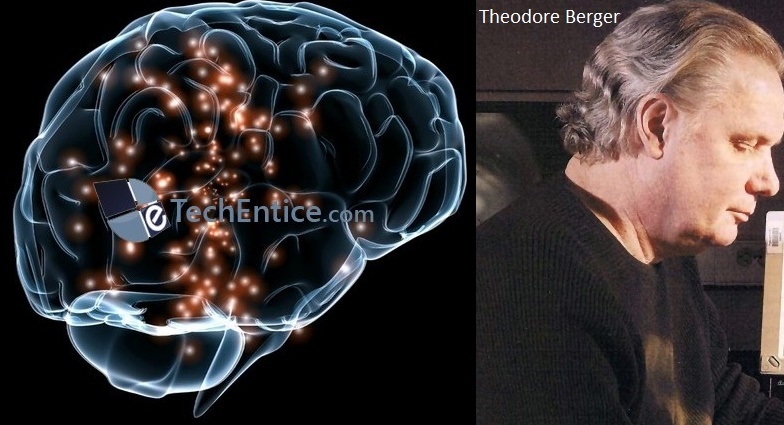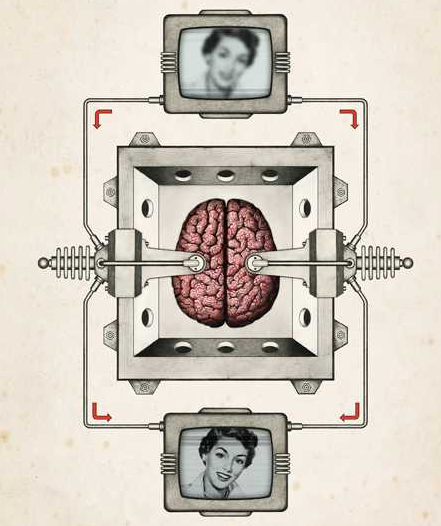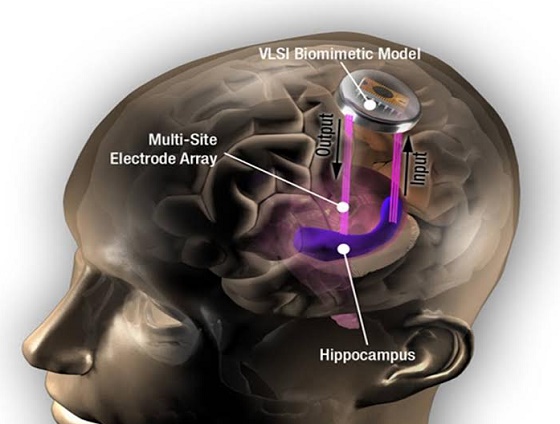Sometimes ideas that initially seem crazy bring out revolution. Medical science has witnessed huge progress in very short span and kidney, heart, lungs or liver implantation are common terms to us nowadays. But still what we could not gain is control over memory in brain. Patients suffering from Alzheimer’s disease, cerebral stroke, accident or other ailments that lead to memory loss becomes invalid eventually even if their other body parts are working. A bio-medical engineer and neuro-scientist Theodore Berger nourished his larger-than-life dream at the University of Southern California of implanting memory in patients who have lost their memory. His dream was proclaimed madness right away by his colleagues but he carried on realizing it for more than two decades. He said, “They told me I was nuts a long time”.

Hippocampus and the magical world of neurons
The brain, when peered through, deep inside shows the most critical laboratory where the labour neurons are functioning every instant in the smartest and most scientific way and you can’t crack it how. Scientist Berger created silicon chips and copied the signal processing that takes place in neurons when they function normally. He said that the aim is not to put back all the lost information together in the brain, but to impart a new processor in the brain that can generate memory. The hippocampus is that part of the brain that holds the memory and it makes a collection of short term memories to form long term memory. This basic function is the most complex one and it took 35 years for Berger to understand the hippocampus. Berger developed complex mathematical functions and theorems based on the internal functioning of the hippocampus and progressed to a great extent. He said, “You don’t have to do everything the brain does, but can you mimic at least some of the things the real brain does?” He furthermore asked, “Can you model it and put it into a device? Can you get that device to work in any brain? It’s those three things that lead people to think I’m crazy. They just think it’s too hard.”

Is it possible to decipher the Code that only the neurons know?
I know by the time you read this subheading you are wonder-struck that each neuron follows some coding that the scientists are yet to decipher? When you see a person, the hippocampus makes a number of short memories of the person and with passing time the short ones make up a long term memory. Now you can remember the person when you meet him after a month or a year. But how it distinguishes between him and another person? Definitely from his physical structure and voice. It generates a code by matching and combining the features of the body, the distance between his nose and eyes. So there is a code for each person and the next time you see him, your neurons decipher it, matches to find out who the person is. In Berger’s words:
” My hippocampus has already formed a long-term memory of you. I’ll remember you into next week. But how can I distinguish you from the next person? Let’s say there are 500,000 cells in the hippocampus that represent you, and there are all sorts of things that each cell is coding—like how your nose is relative to your eyebrow—and they code that with different patterns. So the reality of the nervous system is really complicated, which is why we’re still asking such basic, limited questions about it.”
When the brain witnesses an action the neuron cells receive and send electrical signals. Berger aims to find out what pattern describes the quantitative relationship between the input and the output? If one neuron fires at a specific time and place, what exactly do the neighboring neurons do in response? If this answer is obtained probably the code will be deciphered.
Rabbit Experiment and progress in the process:
Berger did an experiment with rabbit’s brain in graduate school at Harvard along with his mentor Richard Thompson. Thompson used a tone and a puff of air to condition rabbits to blink their eyes. The purpose was to determine where the memory he induced was stored. Electrodes were connected to the brain to study the stimulation of the neurons when the rabbits blinked eyes. According to Berger: “If the animal did learn and you removed it, the animal couldn’t remember.” They succeeded in accomplishing the mission and published results in 1976. Neurons have gates on their membranes that allow electrically charged particles like sodium and potassium to enter or exit. Thompson and Berger together took accounts of the electrical spikes seen in the hippocampus as rabbits developed a memory. They derived mathematical equations and results matched. More experiments were performed after that.
Time for implementation on human beings
The researchers working with Berger did extensive study in mathematical model development and now are trying to implement them in silicon chips that can be implanted in human brains that has stopped forming memories. They would assess whether such a chip could serve as a prosthesis for a damaged hippocampal region. Now they are trying to figure out if they could bypass a central component of the pathway in the brain slices.

“The goal is to improve the quality of life for somebody who has a severe memory deficit. If I can give them the ability to form new long-term memories for half the conditions that most people live in, I’ll be happy as hell, and so will be most patients” says Berger. “I never thought I’d see this go into humans, and now our discussions are about when and how,” he says. “I never thought I’d live to see the day, but now I think I will.”








Leave a Reply